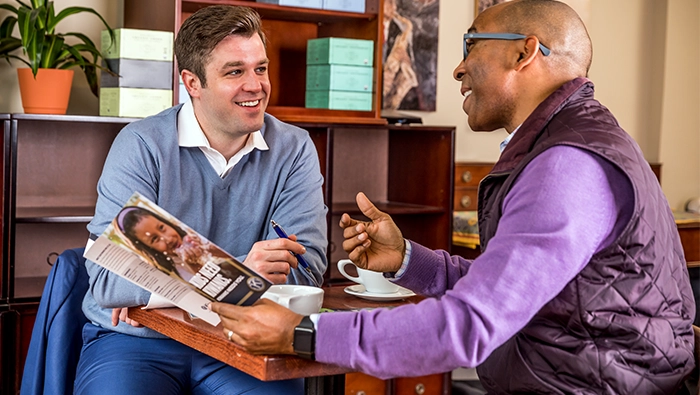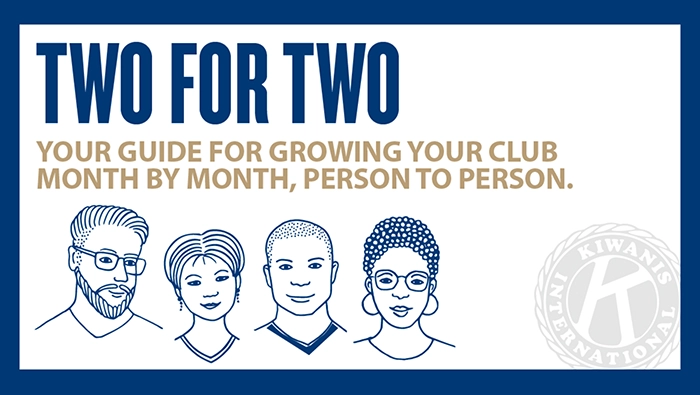Learn about the Kickstarter Grant Program of the Kiwanis Children’s Fund.
By Erin Chandler
The Kiwanis Children’s Fund has awarded its first Kickstarter grants to new Kiwanis clubs!
The Kickstarter Grant Program helps new clubs launch signature projects to serve their communities. All clubs that charter with 30 or more active members will receive invitations to apply for a grant of up to US$1,000 in Tier 1 countries and up to US$500 in Tier 2 countries. Clubs are eligible to apply for up to 120 days following their organization dates. If they maintain their membership or grow to 40 or more active members within one year of chartering, they are eligible to apply for a second grant of up to US$1,000!
Kickstarter grant applications are shorter than traditional club grant applications, and less funding is required from other sources to receive a grant. Grant funds are distributed more quickly, too — once an application is approved, the club should receive its grant within 30 days.
One club’s Kickstarter grant experience
One of the first clubs to receive a Kickstarter grant was the Kiwanis Club of Visionaries in Petaling Jaya, Malaysia, which organized in April 2025. Grant funds will help the club launch its Visionary Library Project. In cooperation with local partners, club members will set up inviting, safe and accessible library spaces and reading corners in malls, rural schools and refugee learning centers throughout the community. They will fill the libraries with age-appropriate reading material that they curate and organize themselves. The club plans to foster a love of reading in the community by hosting storytelling sessions, reading workshops and other literacy-focused activities in these spaces.
We talked to Adrian Ung, president of the Kiwanis Club of Visionaries, about his experience submitting a Kickstarter grant application for his club.
What was the application process like?
Ung: The application process was clear and well structured. The guiding questions helped us articulate our goals and refine our project plan. It also was a great exercise in aligning our team around a shared vision. We truly appreciated how approachable and supportive the Kiwanis team was throughout.
What advice would you give to other clubs considering applying for Kickstarter grants?
Ung: Go for it! This grant is a great way to give your club an early boost and bring your ideas to life. My advice: Focus on a project that reflects your club’s unique identity and passion. Be clear about your objectives, keep your proposal simple and compelling, and show how your initiative will create real community impact.
What are you most looking forward to in launching your signature project?
Ung: We’re most excited about turning our vision into tangible action by launching a literacy initiative that brings books and storytelling to underserved communities. It’s a project that speaks to our hearts and allows us to serve children in a creative and inclusive way. We’re eager to see the smiles, spark curiosity and plant the seeds of lifelong learning.
More Kickstarter grant projects
New Kiwanis clubs all over the world are already benefiting from Kickstarter grants — and so are their communities:
- The Kiwanis Club of Plaquemines, Louisiana, U.S.: School Uniforms for Plaquemines Parish
- The Kiwanis Club of Greater Loveland Area, Ohio, U.S.: Care Closets, Summer Lunches and Materials for Projects
- The Kiwanis Club of Oldham County, Kentucky, U.S.: Oldham County Christmas Basket Project
- The Kiwanis Club of Greater Princeton Community, Indiana, U.S.: A/V Equipment for Creating Entrepreneurial Opportunities (CEO) Program
- The Kiwanis Club of Sabine, Louisiana, U.S.: SPARK Alternative School Positive Behavior Incentive System Rewards
- The Kiwanis Club of Gardabaer-Hera, Iceland: Lestrarhetjur (Reading Heroes)
- The Kiwanis Clubs of Chuan Ai, Chun Hsin, Hsin Tung Li, Li Kuan, Shuang Shih Yung Li, Tung Te and Yung Shan: The Taiwan District’s One Club, One School Program
- The Kiwanis Clubs of Chuan Min, Feng Ya and Yu Lin: The Taiwan District’s Angel Dream Project
Questions?
You can learn more about Kickstarter grants on the program’s webpage. Remember, all eligible clubs will receive an invitation to apply for a Kickstarter grant from the Kiwanis Children’s Fund — but you still need to fill out the application!
If you have questions, email grants@kiwanis.org. You can also call 1-800-KIWANIS (U.S. and Canada) or +1-317-217-6225 (worldwide).



